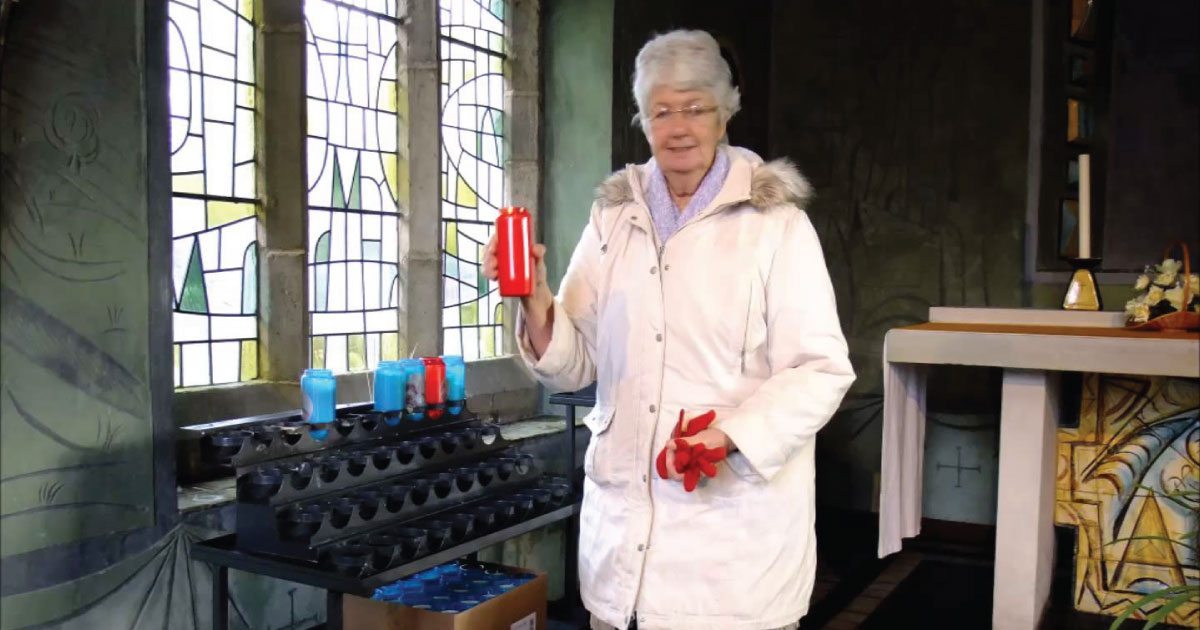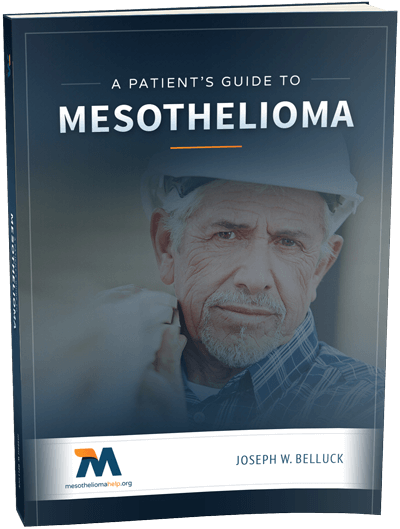Category: Featured News

“The Median Isn’t The Message,” by Stephen J. Gould
Dr. Stephen J. Gould was an internationally-renowned paleontologist and evolutionary biologist who lived a healthy and productive twenty years after he was diagnosed with peritoneal mesothelioma in 1982. When Dr. Gould died in 2002, he died from an entirely unrelated form of cancer. In 1985 he wrote the following essay about his diagnosis and experience with the disease.
It is a wonderful essay about his determination to not let simple statistics determine his response to mesothelioma. Many cancer patients, not just those diagnosed with mesothelioma, have been inspired by Dr. Gould’s life and words.
“The Median Isn’t The Message”
My life has recently intersected, in a most personal way, two of Mark Twain’s famous quips. One I shall defer to the end of this essay. The other (sometimes attributed to Disraeli), identifies three species of mendacity, each worse than the one before—lies, damned lies, and statistics.
Consider the standard example of stretching the truth with numbers – a case quite relevant to my story. Statistics recognizes different measures of an “average” or central tendency. The mean is our usual concept of an overall average – add up the items and divide them by the number of sharers (100 candy bars collected for five kids next Halloween will yield 20 for each in a just world). The median, a different measure of central tendency, is the half-way point. If I line up five kids by height, the median child is shorter than two and taller than the other two (who might have trouble getting their mean share of the candy). A politician in power might say with pride, “The mean income of our citizens is $15,000 per year.” The leader of the opposition might retort, “But half our citizens make less than $10,000 per year.” Both are right, but neither cites a statistic with impassive objectivity. The first invokes a mean, the second a median. (Means are higher than medians in such cases because one millionaire may outweigh hundreds of poor people in setting a mean; but he can balance only one mendicant in calculating a median).
The larger issue that creates a common distrust or contempt for statistics is more troubling. Many people make an unfortunate and invalid separation between heart and mind, or feeling and intellect. In some contemporary traditions, abetted by attitudes stereotypically centered on Southern California, feelings are exalted as more “real” and the only proper basis for action—if it feels good, do it—while intellect gets short shrift as a hang-up of outmoded elitism. Statistics, in this absurd dichotomy, often become the symbol of the enemy. As Hilaire Belloc wrote, “Statistics are the triumph of the quantitative method, and the quantitative method is the victory of sterility and death.”
This is a personal story of statistics, properly interpreted, as profoundly nurturant and life-giving. It declares holy war on the downgrading of intellect by telling a small story about the utility of dry, academic knowledge about science. Heart and head are focal points of one body, one personality.
In July 1982, I learned that I was suffering from abdominal mesothelioma, a rare and serious cancer usually associated with exposure to asbestos. When I revived after surgery, I asked my first question of my doctor and chemotherapist: “What is the best technical literature about mesothelioma?” She replied, with a touch of diplomacy (the only departure she has ever made from direct frankness), that the medical literature contained nothing really worth reading.
Of course, trying to keep an intellectual away from literature works about as well as recommending chastity to Homo sapiens, the sexiest primate of all. As soon as I could walk, I made a beeline for Harvard’s Countway medical library and punched mesothelioma into the computer’s bibliographic search program. An hour later, surrounded by the latest literature on abdominal mesothelioma, I realized with a gulp why my doctor had offered that humane advice. The literature couldn’t have been more brutally clear: mesothelioma is incurable, with a median mortality of only eight months after discovery. I sat stunned for about fifteen minutes, then smiled and said to myself: so that’s why they didn’t give me anything to read. Then my mind started to work again, thank goodness.
If a little learning could ever be a dangerous thing, I had encountered a classic example. Attitude clearly matters in fighting cancer. We don’t know why (from my old-style materialistic perspective, I suspect that mental states feed back upon the immune system). But match people with the same cancer for age, class, health, socioeconomic status, and, in general, those with positive attitudes, with a strong will and purpose for living, with commitment to struggle, with an active response to aiding their own treatment and not just a passive acceptance of anything doctors say, tend to live longer. A few months later I asked Sir Peter Medawar, my personal scientific guru and a Nobelist in immunology, what the best prescription for success against cancer might be. “A sanguine personality,” he replied. Fortunately (since one can’t reconstruct oneself at short notice and for a definite purpose), I am, if anything, even-tempered and confident in just this manner.
Hence the dilemma for humane doctors: since attitude matters so critically, should such a sombre conclusion be advertised, especially since few people have sufficient understanding of statistics to evaluate what the statements really mean? From years of experience with the small-scale evolution of Bahamian land snails treated quantitatively, I have developed this technical knowledge – and I am convinced that it played a major role in saving my life. Knowledge is indeed power, in Bacon’s proverb.
The problem may be briefly stated: What does “median mortality of eight months” signify in our vernacular? I suspect that most people, without training in statistics, would read such a statement as “I will probably be dead in eight months”—the very conclusion that must be avoided, since it isn’t so, and since attitude matters so much.
I was not, of course, overjoyed, but I didn’t read the statement in this vernacular way either. My technical training enjoined a different perspective on “eight months median mortality.” The point is a subtle one, but profound—for it embodies the distinctive way of thinking in my own field of evolutionary biology and natural history.
We still carry the historical baggage of a Platonic heritage that seeks sharp essences and definite boundaries. (Thus we hope to find an unambiguous “beginning of life” or “definition of death,” although nature often comes to us as irreducible continua.) This Platonic heritage, with its emphasis in clear distinctions and separated immutable entities, leads us to view statistical measures of central tendency wrongly, indeed opposite to the appropriate interpretation in our actual world of variation, shadings, and continua. In short, we view means and medians as the hard “realities,” and the variation that permits their calculation as a set of transient and imperfect measurements of this hidden essence. If the median is the reality and variation around the median just a device for its calculation, the “I will probably be dead in eight months”may pass as a reasonable interpretation.
But all evolutionary biologists know that variation itself is nature’s only irreducible essence. Variation is the hard reality, not a set of imperfect measures for a central tendency. Means and medians are the abstractions. Therefore, I looked at the mesothelioma statistics quite differently – and not only because I am an optimist who tends to see the doughnut instead of the hole, but primarily because I know that variation itself is the reality. I had to place myself amidst the variation.
When I learned about the eight-month median, my first intellectual reaction was: fine, half the people will live longer; now what are my chances of being in that half. I read for a furious and nervous hour and concluded, with relief: damned good. I possessed every one of the characteristics conferring a probability of longer life: I was young; my disease had been recognized in a relatively early stage; I would receive the nation’s best medical treatment; I had the world to live for; I knew how to read the data properly and not despair.
Another technical point then added even more solace. I immediately recognized that the distribution of variation about the eight-month median would almost surely be what statisticians call “right skewed.” (In a symmetrical distribution, the profile of variation to the left of the central tendency is a mirror image of variation to the right. In skewed distributions, variation to one side of the central tendency is more stretched out – left skewed if extended to the left, right skewed if stretched out to the right.) The distribution of variation had to be right skewed, I reasoned. After all, the left of the distribution contains an irrevocable lower boundary of zero (since mesothelioma can only be identified at death or before). Thus, there isn’t much room for the distribution’s lower (or left) half—it must be scrunched up between zero and eight months. But the upper (or right) half can extend out for years and years, even if nobody ultimately survives. The distribution must be right skewed, and I needed to know how long the extended tail ran – for I had already concluded that my favorable profile made me a good candidate for that part of the curve.
The distribution was indeed, strongly right skewed, with a long tail (however small) that extended for several years above the eight month median. I saw no reason why I shouldn’t be in that small tail, and I breathed a very long sigh of relief. My technical knowledge had helped. I had read the graph correctly. I had asked the right question and found the answers. I had obtained, in all probability, the most precious of all possible gifts in the circumstances – substantial time. I didn’t have to stop and immediately follow Isaiah’s injunction to Hezekiah—set thine house in order for thou shalt die, and not live. I would have time to think, to plan, and to fight.
One final point about statistical distributions. They apply only to a prescribed set of circumstances – in this case to survival with mesothelioma under conventional modes of treatment. If circumstances change, the distribution may alter. I was placed on an experimental protocol of treatment and, if fortune holds, will be in the first cohort of a new distribution with high median and a right tail extending to death by natural causes at advanced old age.
It has become, in my view, a bit too trendy to regard the acceptance of death as something tantamount to intrinsic dignity. Of course I agree with the preacher of Ecclesiastes that there is a time to love and a time to die—and when my skein runs out I hope to face the end calmly and in my own way. For most situations, however, I prefer the more martial view that death is the ultimate enemy—and I find nothing reproachable in those who rage mightily against the dying of the light.
The swords of battle are numerous, and none more effective than humor. My death was announced at a meeting of my colleagues in Scotland, and I almost experienced the delicious pleasure of reading my obituary penned by one of my best friends (the so-and-so got suspicious and checked; he too is a statistician, and didn’t expect to find me so far out on the right tail). Still, the incident provided my first good laugh after the diagnosis. Just think, I almost got to repeat Mark Twain’s most famous line of all: the reports of my death are greatly exaggerated.

Mavis Nye: Mesothelioma Survivor, Advocate and Author
Last week we featured Mavis Nye and her breakthrough results in a clinical trial where she received the immunotherapy drug known as Keytruda in the U.S. (The same drug that freed former U.S. president Jimmy Carter of his melanoma.) Today, read about how Mavis is making a difference for the mesothelioma community.
Mavis Nye knows what it takes to fight mesothelioma: persistence, relentlessness and thick skin. It took every one of those traits, and many more, and over six long years for her to successfully beat mesothelioma. Now, she has made it her goal in 2016 to make it a little easier for other mesothelioma warriors by intensifying her education and advocacy efforts.
Mavis was given a nearly clean bill of health in November when she was told that her formerly life-threatening mesothelioma tumors are now dormant. Finding that silver bullet was not easy, and Mavis said that she and Ray, her husband of 55 years, “hunted down information and treatments,” covered hundreds of miles around the country traveling to hospitals and to conferences, and contacted nearly every mesothelioma specialist she could find to give her an opportunity to live to see another Birthday.
Mavis saw firsthand that pembrolizumab is not for everyone, but a U.S. clinical trial found the drug to be effective in controlling mesothelioma tumors in three-fourths of patients. With her own success, and the hope that others will see the same results, Mavis wants to help get the drug available to other UK mesothelioma patients.
“It’s very daunting [being the first patient to achieve remission] and I feel I have to really keep fighting to get the other Mesowarriors onto the drug,” says Mavis. “OK, it’s not for everyone, but at least give everyone a chance.”
Mavis Nye’s Meso Story
In 2010, Mavis published her book, “Meso Warrior,” to share her story and to “give other mesothelioma sufferers the insight that it’s not all doom and gloom.”
At the end of last year, she followed that up with her second book, “Five Years a Mesowarrior.” In this book, Mavis takes the readers through four chemotherapy regimens and two phase one clinical trials, ending just prior to her current trial at the Royal Marsden.
“I want them to have hope,” said Mavis when asked what she wants readers to get from her stories.
“I want people to see that you can live with a terminal illness and fight, but at the same time educate people about asbestos and the disease it causes.”
Mavis already has another book in the works. She will publish it when the Royal Marsden trial is complete and she can freely talk about the results.
“I hope also to be proving I’m living without Mesothelioma by then.”
Mavis Will Shout from the Rooftops for the Mesothelioma Community
“I have campaigned for asbestos victims, and spoke in the House of Commons of the need for more research and trials,” Mavis told Mesothelioma Help of her advocacy efforts. “I have joined in with British Lung Foundation and Mesothelioma UK, and been the voice for Mesothelioma Patients.”
Expert Insight
Mavis Nye
“My new year’s resolution is to be an even bigger voice in 2016.”
Anyone who knows how hard Mavis has worked in the past, will find it hard to envision how she will push even harder in the new year. But, those same people know that Mavis does what she says she will. Her list of support efforts continues to grow, along with the numbers of people impacted by her work.
“I will be talking at the iMIG Conference [May 1-4 in Birmingham, UK] where I will be free to talk about my success with Keytruda, and we are going to make a huge push for the next trial,” says Mavis. “I will be very involved in the NHS [National Health Service, the publicly funded healthcare system for England] and my job as Patient Rep in the Local East Kent Cancer Network, and also in Research of Cancer Treatment in London and Leicester Hospitals.”
Most recently, Mavis has begun her support of “men who strip out asbestos, as I feel they are working in hazardous conditions.” She agreed to be Patron of the Charity for the newly established Hazmat Professionals. The official launch of the organization will be early this year.
“It was my dream to leave this legacy and I have achieved it with the backing of some lovely people,” Mavis wrote in her Nov. 8 blog entry in A Dairy Of A Mesowarrior Living With Mesothelioma.
“People like myself must shout from the roof tops and be heard. I have a voice and I will use it: in my blog, my speeches, my books and Facebook!”
See last week’s article of Mavis Nye’s exceptional treatment results: Clinical Trial Frees Mavis Nye of Mesothelioma.
Find out more about Mavis and Ray at the following links:
- A Diary Of A Mesowarrior Living With Mesothelioma
https://rayandmave.wordpress.com/2015/11/17/a-diary-of-a-mesowarrior-living-with-mesothelioma-scan-results-have-really-shocked/ - Onestop Mesothelioma
http://onestopmesothelioma.co.uk/index.html - Mavis and Ray’s Bookstore
http://www.lulu.com/spotlight/nyeray7070
Mavis and Ray on MesotheliomaHelp:
- Clinical Trial Frees Mavis Nye of Mesothelioma
- Mavis Nye Finds Her Voice and Fights for the Mesothelioma Community
- The Man Behind the Mesothelioma Warrior: Ray Nye Discusses Caring for His Wife
Mavis donates all proceeds of her books to Mesothelioma UK to help raise funds for research. Order her books at Mavis and Ray’s Bookstore.

Use Your Voice to Fight Mesothelioma in 2016
As another year kicks off, many people like to reflect back on the last year and find ways to make the New Year better. For patients battling mesothelioma, though, better may not be an option. However, you may be able to be just a little more vocal to make a difference in your own care and in educating the public about mesothelioma.
Mavis Nye, of England, who after six and one-half years of battling mesothelioma was told her tumors are now devoid of mesothelioma, told Mesothelioma Help that she will use 2016 to advocate for all patients.
“My new year resolution is to be an even bigger voice,” says Mavis. “I will be talking at the iMIG Conference [May 1-4 in Birmingham, UK]…I will be very involved in the NHS… and also in research of cancer treatment in London and Leicester Hospitals.” And, she said, she will ” keep fighting to get the other Mesowarriors onto the drug [that has halted her mesothelioma].”
Read how Mavis Nye kicked mesothelioma.
You may choose to advocate for the mesothelioma community by participating in an event or by creating your own fundraiser. Jennifer Gelsick, whose father lost his fight with mesothelioma in 2013, offers a wealth of advice on how to educate friends, family and the public on mesothelioma and to bring in money to support research at the same time. See her advocacy page for more information.
You can also use your voice to be empowered to aid in your own care. When patients are empowered it means they are informed of their disease and their treatment options, and they are willing to take an active role in their treatment. Knowing what questions to ask of your physician when diagnosed with mesothelioma is an important step towards becoming an empowered patient.
Experts at MD Anderson Cancer Center suggest asking the “right” questions to get more out of the interaction with your health care providers. Don’t be afraid to say, “I don’t understand what you’re saying,” and ask them to explain it again, and again until you understand the information. Work with your mesothelioma care team to develop your treatment plan and to make all decisions – don’t just settle for what they say if you have doubts.
Managing a disease such as mesothelioma can be overwhelming, but partnering with your physician from the start may be the key to receiving the best treatment.
Now that 2016 is here, you have 365 new days to make a difference. But, you also have 365 chances to take the time to enjoy the simpler things in life.
“I do hope to get back to camping with my Kent Caravan and Camping Club,” says Mavis of her 2016 hopes.
All of us here at Mesothelioma Help wish all of you a Happy New Year and best wishes for 2016!

2015 Year in Review: Top Mesothelioma Stories
Another year is coming to a close, but for those in the mesothelioma community it is the end of another year without a cure. Unfortunately, once again, Mesothelioma Help lost a “Faces of Mesothelioma” friend to mesothelioma during the year. David Stetler, whose daughter Amanda chronicled his ups and downs during his battle with the disease, passed away on March 16 leaving many wondering if this needless suffering will ever end.
But, there has been some good news from researchers and the medical community. While they may not have brought an end to the asbestos cancer, there are many treatments in clinical trials, promising leads still in the lab, and several approved treatments now available to patients that show promise for effectively fighting back the relentless cancer.
Every year Mesothelioma Help reports on the top mesothelioma stories of the year, and below we highlight some of our most important stories of 2015.
Number One MesotheliomaHelp Story of 2015
Once again, Mavis Nye of England, who has been living with mesothelioma for six years, and has been a staunch advocate for herself and for all mesothelioma patients, takes the top spot for successfully fighting mesothelioma in 2015.
In 2014, Mavis enrolled in the MK-3475 clinical trial being run at The Royal Marsden, a world-leading cancer center in the UK. MK-3475 is known as Keytruda in the U.S. where it has been approved for the treatment of advanced lung cancer and melanoma.
Mavis was one of the first mesothelioma patients in the UK to participate in the trial designed to test the efficacy of the drug, developed by Merck, in suppressing the PD-L1 biomarker found in cancer cells. PD-L1, or programmed death-ligand 1, is a protein that has been shown to play a role in suppressing the immune system during cancer and other diseases.
Mavis announced in her Nov. 17 blog that her doctors told her during the reading of her scan results that she no longer has any active mesothelioma in her tumors. December 16 marked her 40th treatment with MK-3475. She will continue on the drug through the end of the trial, May 2016.
Patients across the U.S. are clamoring for Keytruda after 91-year-old, former president Jimmy Carter announced in December the drug helped him beat melanoma, that had metastasized to his liver and brain.
We hope all mesothelioma patients see the same results as Mavis!
PD-L1 Inhibitors in the Spotlight. In addition to Keytruda, the number one success story of 2015, various other PD-L1 inhibitors have also seen success in fighting back cancers.
Opdivo: Opdivo, developed by Bristol-Myers Squibb, is another FDA-approved lung cancer drug that works by blocking the PD-L1 protein and activating the immune system. Except for the dosing differences, Opdivo and Keytruda are comparable, according to reports.
“This is yet another example of the advances we are making in the treatment of lung cancer using the approach of targeting specific tumor genes and their mutations.”
Genentech: The company reports that its investigational, anti-PDL1, immunotherapy drug atezolizumab (previously known as MPDL3280A), has seen positive results in two Phase II clinical trials for non-small cell lung cancer patients (NSCLC). The results “showed a statistically significant survival benefit compared to chemotherapy” in patients with recurrent NSCLC with medium and high levels of PD-L1.
FDA Approvals. The U.S. Food and Drug Administration has been on a roll this year in approving anti-cancer drugs. While none of the approvals are specific to mesothelioma, those approved for lung cancer care open new doors for treatment of mesothelioma patients.
- The FDA announced last month that it has approved Portrazza (necitumumab) to be administered in combination with the chemotherapy drugs gemcitabine and cisplatin to treat patients with advanced squamous non-small cell lung cancer who have not previously received cancer treatment. The approval, represents progress for patients diagnosed with metastatic squamous non-small cell lung cancer, as each new therapy advances cancer care and gives patients hope for improved outcomes.”
- The FDA granted accelerated approval for the anti-cancer drug Tagrisso (osimertinib) to treat patients with advanced NSCLC. According to AstraZeneca, the maker of Tagrisso, also known as AZD9291, the drug is targeted to patients whose tumors express the EGFR mutation (T790M) and whose disease has gotten worse after treatment with other EGFR-blocking therapy. Tagrisso is the only approved medicine indicated for NSCLC patients with the EGFR T790M mutation. Researchers have found that over 50% of pleural mesothelioma patients express the EGFR protein.
- On Dec. 11, the FDA announced approval of Alecensa (alectinib) for the treatment of ALK-positive NSCLC in patients who have progressed on or are intolerant to Xalkori (crizotinib). Alecensa, from Genentech, is an oral medication that blocks the activity of the ALK protein, which may prevent cancer cells from growing and spreading.
Immunotherapy. With Keytruda leading the news, developments in the field of immunotherapy for the treatment of mesothelioma have made this year particularly newsworthy.
“Immunotherapy is a new class of cancer treatment that works to harness the innate powers of the immune system to fight cancer,” according to the Cancer Research Institute. Recharging the body’s own defense mechanism, the immune system, immunotherapy therapies may hold greater potential than current treatment approaches:
- To fight cancer more powerfully,
- To offer longer-term protection against the disease,
- To come with fewer side effects, and,
- To benefit more patients with more cancer types.
MesotheliomaHelp will continue to bring articles focused on immunotherapy to our readers.
(Note: According to medical reports, immunotherapy drugs like Keytruda and Opdivo help a minority of patients, but those who respond to the treatment often do extremely well.)
COMMAND Trial Stops Enrollment. Last year the COMMAND (Control Of Mesothelioma with MAiNtenance Defactinib) trial was seen as one of the bright spots in the future of mesothelioma treatment. Sadly, this year, the clinical trial was halted after a data safety monitoring board found that VS-6063, when given to mesothelioma patients as part of the COMMAND (Control Of Mesothelioma with MAiNtenance Defactinib) trial, did not produce “a sufficient level of efficacy” to justify continuation.
About Mesothelioma
Mesothelioma is a deadly cancer of the lungs, heart or abdomen, caused by past exposure to asbestos. Mesothelioma has a long latency period where those exposed to asbestos may not exhibit symptoms for nearly 60 years after exposure. Mesothelioma can be treated with surgery, chemotherapy and radiation, however, the likelihood of recurrence of the cancer is high. There is no cure for mesothelioma.
Know more about Mesothelioma and how you can deal with it.

Mesothelioma Community Eyes PD-L1 Inhibitor That Shows “Statistically Significant Survival” for Lung Cancer Patients
The mesothelioma community has been on cloud nine this year with clinical trials that have heralded good news across the globe. Immunotherapy treatments have moved into the spotlight, and it seems that instead of “if” the treatments become available to mesothelioma patients, it is “when.” Now, one more potential immunotherapy treatment for lung cancer and mesothelioma patients is on the horizon.
Genentech, a biotechnology company focused on developing treatments for patients with serious or life-threatening medical conditions, and a member of the Roche group, reported in a Sept. 26 press release that its investigational, anti-PDL1, immunotherapy drug atezolizumab (previously known as MPDL3280A), has seen positive results in two Phase II clinical trials for non-small cell lung cancer patients (NSCLC). Atezolizumab is designed to target PD-L1 expressed on tumor cells and tumor-infiltrating immune cells and to enable the activation of T cells, according to the company.
“Results from both of our studies in non-small cell lung cancer showed that measuring PD-L1 may help identify people most likely to respond to atezolizumab, and the majority of responses continued when these data were assessed,” said Sandra Horning, M.D., chief medical officer and head of Global Product Development.
Atezolizumab, an inhibitor of cell programmed death ligand 1 (PDL1), has received breakthrough designation from the U.S. Food and Drug Administration for use in the treatment of NSCLC in patients whose tumors have high expression of PDL1 and whose disease worsened during or after standard treatments.
In October, the FDA approved Keytruda for advanced NSCLC. Keytruda, marketed by Merck, is also a PD-L1 inhibitor that has been shown to be effective in controlling mesothelioma tumors in three-fourths of patients. Mavis Nye of England, a six-year mesothelioma survivor, is virtually cancer free after over one year of Keytruda treatments during a clinical trial. (Keytruda is still known as MK-3475 in the UK.) And Lou Williams of Australia who has been battling mesothelioma for over 13 years was given new life when she began Keytruda.
Breakthrough Therapy designation from the FDA is a process designed to expedite the development and review of drugs that are intended to treat a serious condition and preliminary clinical evidence indicates that the drug may demonstrate substantial improvement over available therapy on a clinically significant endpoint(s).
The two atezolizumab studies are POPLAR, a clinical trial comparing the efficacy of atezolizumab with docetaxel chemotherapy, and the BIRCH study testing the efficacy of atezolizumab in PD-L1 positive patients.
The results of the studies were reported in Vienna, Austria at the European Cancer Congress 2015 held Sept. 25 – 29.
Genentech reports the results of the POPLAR study “showed a statistically significant survival benefit compared to chemotherapy” in patients with recurrent NSCLC with medium and high levels of PD-L1. The patients lived 7.7 months longer than those who received docetaxel chemotherapy.
The company reports that in the BIRCH trial, “atezolizumab shrank tumors (objective response rate, ORR) in up to 27 percent (p=0.0001) of people whose disease had progressed on prior medicines and also expressed the highest levels of PD-L1.”
“Higher PDL1 expression correlates with greater response rates and could be used to identify patient for treatment,” said lead author Benjamin Besse, MD, from the Gustave Roussy Institute, Villejuif, France, during the presentation.
For the nearly 3,000 Americans diagnosed with mesothelioma each year, every breakthrough is critical. Although the scientists are not promising a cure with the new drug, patients are hopeful the drug will bring an increased survival and a nearly uninterrupted lifestyle for the patients undergoing treatment.
- See the Sept. 27 MedScape article for more details on the results of the two trials.
- See NCT01903993 on ClinicalTrials.gov to find out more about the POPLAR clinical trial.
https://clinicaltrials.gov/ct2/show/study/NCT01903993?term=POPLAR&rank=1#locn
- See NCT02031458 on ClinicalTrials.gov to find out more about the BIRCH clinical trial.
https://clinicaltrials.gov/ct2/show/NCT02031458?term=BIRCH+MPDL3280A&rank=1
Sources:
- Atezolizumab
https://www.gene.com/media/press-releases/14607/2015-09-26/two-positive-studies-of-genentechs-inves - European Cancer Congress 2015
http://www.esmo.org/Conferences/Past-Conferences/European-Cancer-Congress-2015
Free Mesothelioma Patient & Treatment Guide
We’d like to offer you our in-depth guide, “A Patient’s Guide to Mesothelioma,” absolutely free of charge.
It contains a wealth of information and resources to help you better understand the condition, choose (and afford) appropriate treatment, and exercise your legal right to compensation.
Download Now